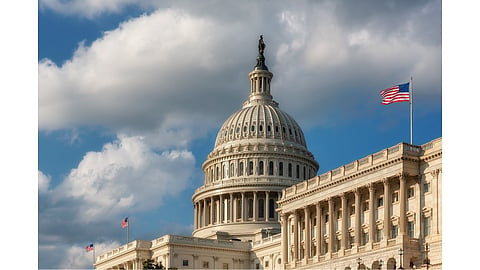

The final Senate version of the OBBB has removed excise taxes on solar and wind projects linked to FEOC concerns
The bill specifies that projects starting within 12 months of its enactment qualify for 100% ITC/PTC
For solar facilities that begin construction 12 months after the date of enactment, Sections 45Y and 48E credits are subject to a ‘placed in service’ deadline of December 31, 2027
US President Donald Trump’s One Big Beautiful Bill (OBBB) has cleared the Senate by a 51:50 vote with Vice President JD Vance casting the tie-breaker vote. For the renewable energy industry, this brings some relief as it removes the tax threat posed by the previous Senate version to wind and solar power projects.
Analysts at ROTH share that the final version passed by the Senate on July 1, 2025, removed the FEOC excise tax language.
The Senate version of the bill, unveiled last week, proposed a surprise tax on wind and solar power projects that use any material assistance from a prohibited foreign entity or a Foreign Entity of Concern (FEOC). It also proposed an early end to the solar and wind tax credits, phasing them out by December 31, 2027 (see US Senate Version Of OBBB Threatens Renewables With New Tax).
According to the Senate version of the bill passed, as per Politico, it retains the December 31, 2027 as the deadline for projects to be ‘placed in service’ to be able to receive Clean Electricity Production Tax Credit under Section 45Y, and Clean Electricity Investment Tax Credit under Section 48E, available under the Inflation Reduction Act (IRA).
However, Christian Roselund of Clean Energy Associates (CEA) said in a LinkedIn post that the bill allows for wind and solar projects that enter construction within 12 months of its enactment to claim the Investment Tax Credit (ITC)/Production Tax Credit (PTC).
Philip Shen, Senior Research Analyst and Managing Director at ROTH, confirmed when he said, “Specifically, if this version becomes law, then the industry would be able to start construction through mid-2026 and have four years to build at 100% ITC/PTC. This would be a big win as volumes likely would not drop off a cliff in 2028, as the prior Senate version draft proposed.”
The President and CEO of the Solar Energy Industries Association (SEIA), Abigail Ross Hopper, took to her LinkedIn account to share an overview of what the Senate version of the bill passed, which is as follows:
Excise Tax: There are no new excise taxes on solar projects. This was removed from the bill in the final hours.
Section 25D: The credit will not apply to expenditures made after December 31, 2025.
Sections 45Y/48E: For solar facilities that begin construction (pursuant to existing IRS guidance) after the date that is 12 months after enactment, 45Y and 48E are subject to a placed in service deadline of December 31, 2027. The placed in service requirement does not apply to energy storage projects.
Domestic Content: Fixes the drafting error made in the IRA for the domestic content bonus credit under 48E (projects that begin construction after June 16, 2025, will be subject to the 45% adjusted percentage to obtain the domestic content bonus, with annual increases thereafter).
Section 45X: For integrated component production, an eligible component manufactured and integrated into another eligible component must be manufactured at the same facility, and the end component must be sold to an unrelated person and contain not less than 65% direct material costs attributable to domestic content. Changes to the definition of “battery module.” Phase out for critical mineral production beginning in 2031.
FEOC Restrictions for 45Y/48E/45X: Beginning in taxable years after enactment, no specified foreign entity or foreign-influenced entity can claim a 45Y/48E or 45X credit. Existing IRS guidance on beginning of construction is codified for purposes of applying these restrictions. For projects that begin construction after December 31, 2025, and for eligible components sold in 2026 and later, taxpayers cannot receive “material assistance from a prohibited foreign entity”.
According to CNBC, shares of renewable energy companies are rising after the proposed tax was dropped from the Senate version. Earlier, T1 Energy said it will be able to align its manufacturing operations with the final version of the bill as it maintains transferability and stackability of 45X credits, both important incentives for the domestic solar manufacturing industry.
“The ability to potentially stack the 45X credits from integrated U.S. cell and module production is expected to contribute meaningfully to T1’s EBITDA generation,” stated T1.
Now, the bill is back at the House, from where it will go to the President, who is expected to sign it into law on or before July 4, 2025.
